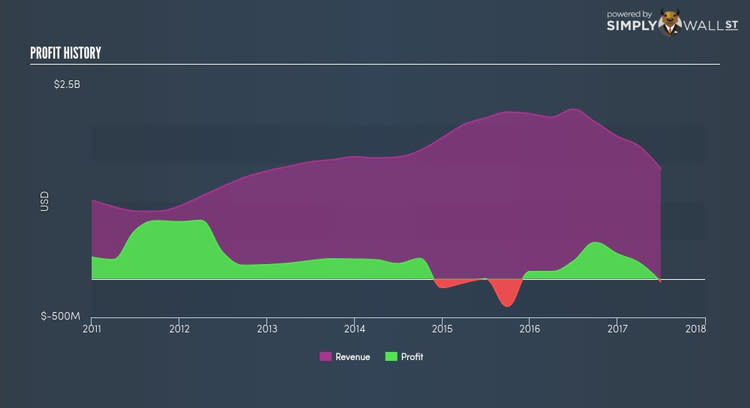How Does Rowan Companies plc (RDC) Affect Your Portfolio Returns?

If you are a shareholder in Rowan Companies plc’s (NYSE:RDC), or are thinking about investing in the company, knowing how it contributes to the risk and reward profile of your portfolio is important. The beta measures RDC’s exposure to the wider market risk, which reflects changes in economic and political factors. Not every stock is exposed to the same level of market risk, and the broad market index represents a beta value of one. A stock with a beta greater than one is considered more sensitive to market-wide shocks compared to a stock that trades below the value of one.
See our latest analysis for RDC
What is RDC’s market risk?
With a beta of 1.79, Rowan Companies is a stock that tends to experience more gains than the market during a growth phase and also a bigger reduction in value compared to the market during a broad downturn. According to this value of beta, RDC will help diversify your portfolio, if it currently comprises of low-beta stocks. This will be beneficial for portfolio returns, in particular, when current market sentiment is positive.
Could RDC's size and industry cause it to be more volatile?
A market capitalisation of USD $1.60B puts RDC in the category of small-cap stocks, which tends to possess higher beta than larger companies. In addition to size, RDC also operates in the energy equipment and services industry, which has commonly demonstrated strong reactions to market-wide shocks. Therefore, investors may expect high beta associated with small companies, as well as those operating in the energy equipment and services industry, relative to those more well-established firms in a more defensive industry. This is consistent with RDC’s individual beta value we discussed above. Next, we will examine the fundamental factors which can cause cyclicality in the stock.
Can RDC's asset-composition point to a higher beta?
An asset-heavy company tends to have a higher beta because the risk associated with running fixed assets during a downturn is highly expensive. I test RDC’s ratio of fixed assets to total assets in order to determine how high the risk is associated with this type of constraint. RDC's fixed assets to total assets ratio of higher than 30% shows that the company uses up a big chunk of its capital on assets that are hard to scale up or down in short notice. Thus, we can expect RDC to be more volatile in the face of market movements, relative to its peers of similar size but with a lower proportion of fixed assets on their books. Similarly, RDC’s beta value conveys the same message.
What this means for you:
Are you a shareholder? You could benefit from higher returns from RDC during times of economic growth. Its higher fixed cost isn’t a major concern given margins are covered with high consumer demand. However, in times of a downturn, it may be safe to look at a more defensive stock which can cushion the impact of lower demand.
Are you a potential investor? I recommend that you look into RDC's fundamental factors such as its current valuation and financial health as well. Take into account your portfolio sensitivity to the market before you invest in the stock, as well as where we are in the current economic cycle. RDC may be a great investment during times of economic growth.
Beta is one aspect of your portfolio construction to consider when holding or entering into a stock. But it is certainly not the only factor. Take a look at our most recent infographic report on Rowan Companies for a more in-depth analysis of the stock to help you make a well-informed investment decision. But if you are not interested in Rowan Companies anymore, you can use our free platform to see my list of over 50 other stocks with a high growth potential.
To help readers see pass the short term volatility of the financial market, we aim to bring you a long-term focused research analysis purely driven by fundamental data. Note that our analysis does not factor in the latest price sensitive company announcements.
The author is an independent contributor and at the time of publication had no position in the stocks mentioned.

